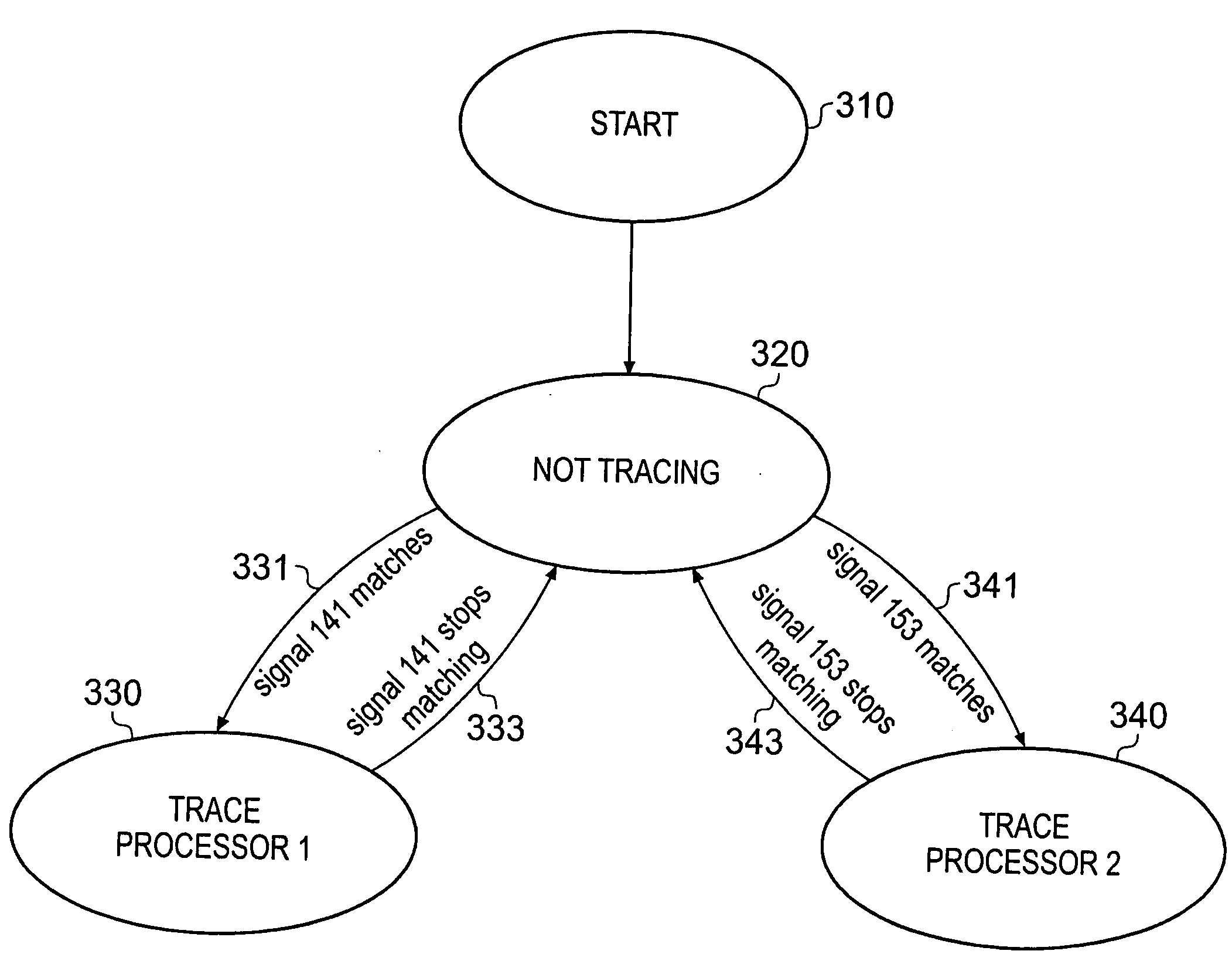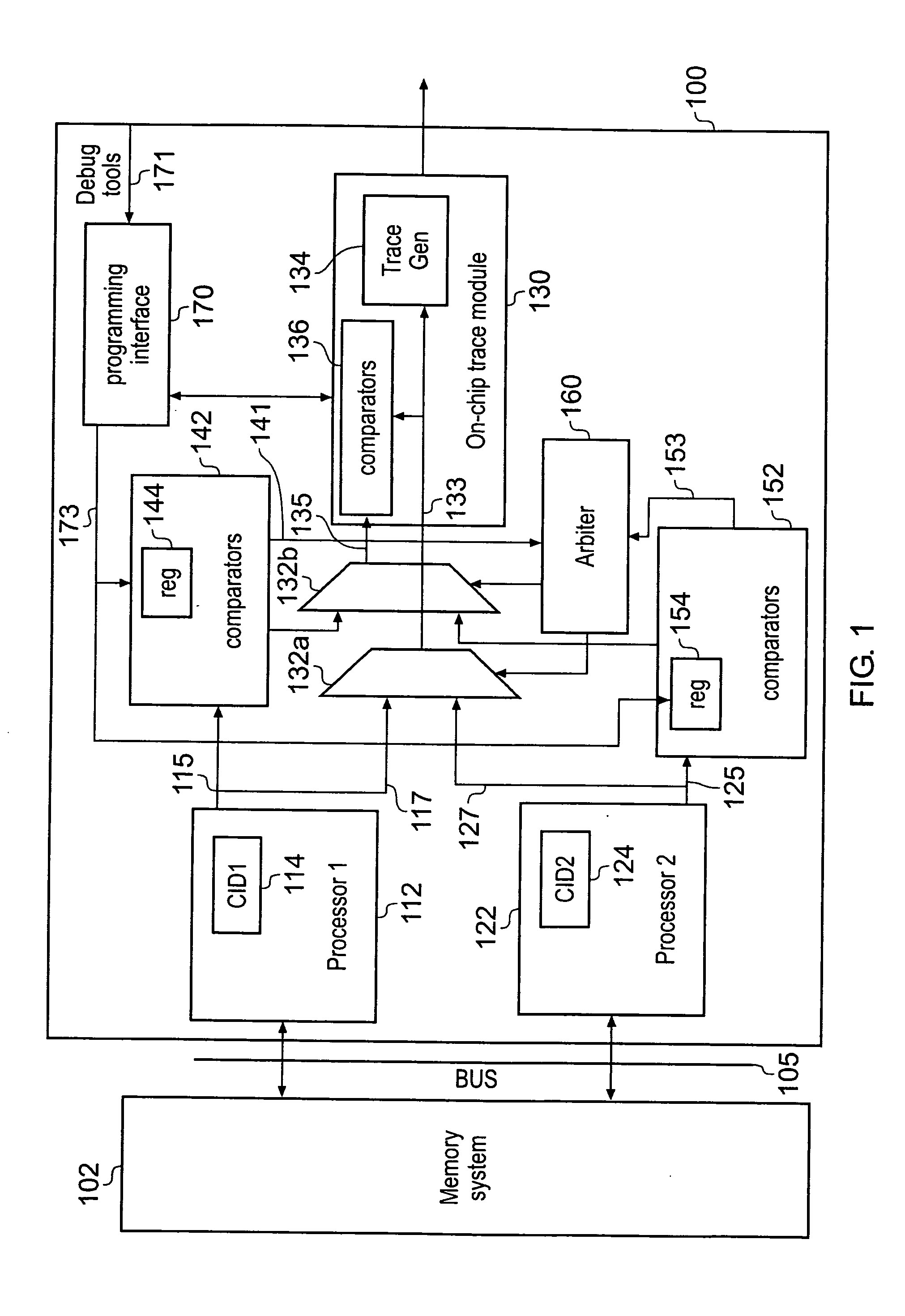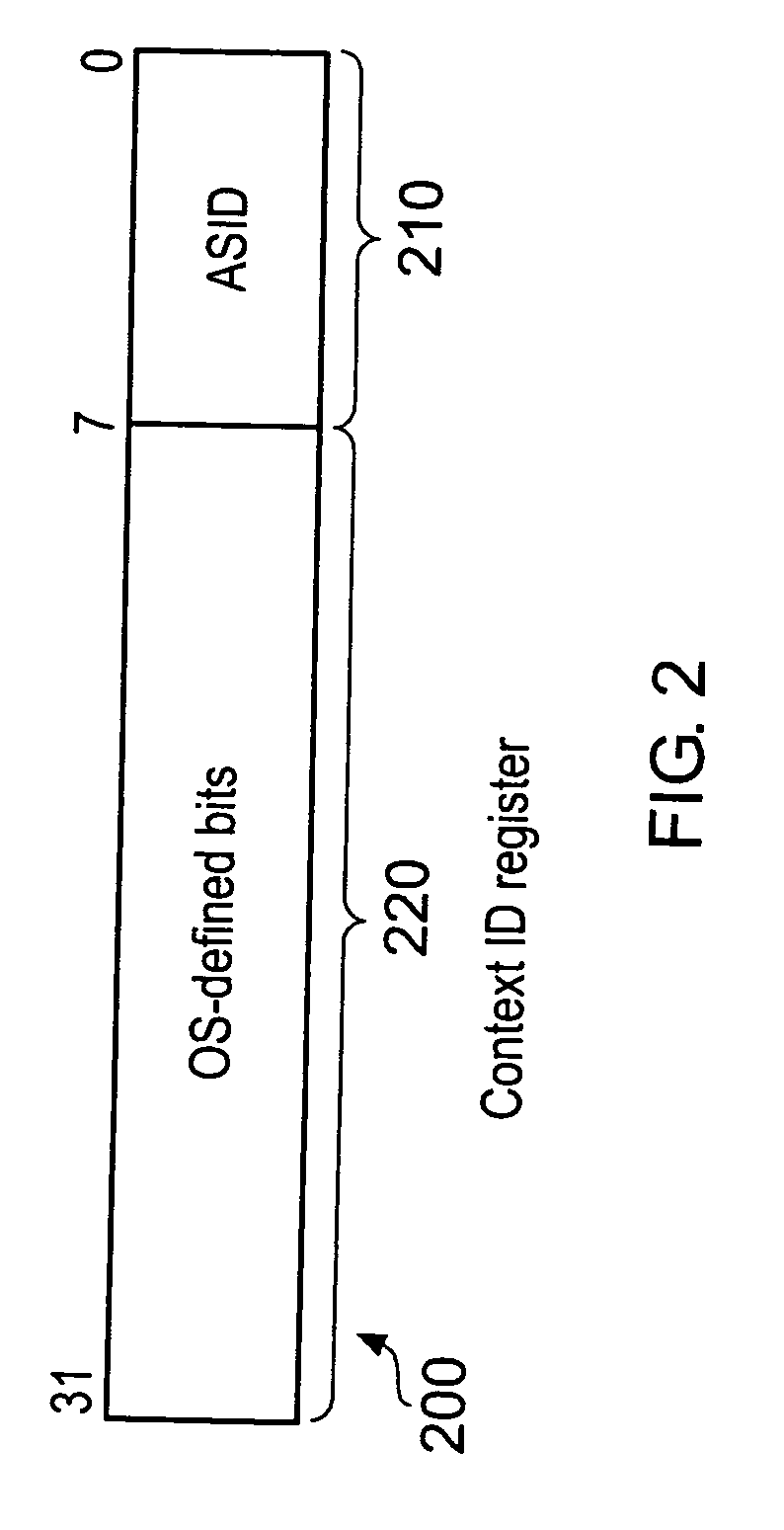Generation of trace data in a multi-processor system
a multi-processor system and trace data technology, applied in the field of trace data generation, can solve the problems of increasing the complexity of the system, unable to track the architecture of the processor (such as the contents of registers, values stored at particular memory locations, flags or modules within the processing system) via externally accessible pins
- Summary
- Abstract
- Description
- Claims
- Application Information
AI Technical Summary
Benefits of technology
Problems solved by technology
Method used
Image
Examples
second embodiment
[0075]FIG. 4 schematically illustrates a symmetric multi-processor system. In this arrangement, instead of providing a single common on-chip trace module shared between the first and second processors for tracing of both data and instructions, a single common on-chip trace module is provided to perform data trace, whereas separate instruction tracing circuitry is provided for each of the two processors 112, 122. The memory system 102, first and second processors 112, 122 and their respective comparator modules 142, 152 perform the same functions as the correspondingly numbered elements of FIG. 1. Also, similarly to FIG. 1, the multiplexer 132 is controlled by the arbitration circuitry 160 to output to diagnostic data either from the first processor 112 or the second processor 122 in dependence upon whether or not there is a match between the context ID for the respective processor and the process of interest to the debug tools.
[0076]However, the arrangement of FIG. 4 has an on-chip ...
third embodiment
[0079]FIG. 5 schematically illustrates a multi-processor system which uses comparison resources integral to the individual processors to provide processing state information to the tracing circuitry. The arrangement of FIG. 5 comprises: a memory system 502; a first processor 512; a second processor 522; arbitration circuitry 560; a multiplexer 532; an on-chip trace module 530 and a program interface 570. The first processor 512 has a first breakpoint unit 514 whilst the second processor 522 has a second breakpoint unit 524. The on-chip trace module 530 of the embodiment of FIG. 5 is similar in structure and function to the on-chip trace module 130 of FIG. 1 and it traces both data and instructions. However, in the embodiment of FIG. 5, the multiplexer 532 switches between output diagnostic data from the first processor 512 to output data corresponding to the second processor 524 in dependence upon a control signal issued by the arbitration circuitry 560.
[0080]The arbitration circuit...
fourth embodiment
[0084]FIG. 6 schematically illustrates a symmetric multi-processor system. In this embodiment the processing state information used to guide selective switching between outputting diagnostic information from a first processor to a second processor is state information derived from the memory system rather than directly from the processors.
[0085]The arrangement of FIG. 6 comprises: a memory system 602 having a coherency controller 604; a first processor 612: a second processor 622; a multiplexer 632; an on-chip trace module 630; a comparator 606; arbitration circuitry 660; and a program interface 670. In this embodiment, the arbitration circuitry 660 controls the multiplexer 632 to switch between outputting diagnostic data of the first processor 612 and the second processor 622 in dependence upon processing state information derived from the coherency controller 604 of the memory system 602. Thus, in the FIG. 6 embodiment, information from the memory system 602 rather than from the p...
PUM
 Login to View More
Login to View More Abstract
Description
Claims
Application Information
 Login to View More
Login to View More - R&D
- Intellectual Property
- Life Sciences
- Materials
- Tech Scout
- Unparalleled Data Quality
- Higher Quality Content
- 60% Fewer Hallucinations
Browse by: Latest US Patents, China's latest patents, Technical Efficacy Thesaurus, Application Domain, Technology Topic, Popular Technical Reports.
© 2025 PatSnap. All rights reserved.Legal|Privacy policy|Modern Slavery Act Transparency Statement|Sitemap|About US| Contact US: help@patsnap.com



